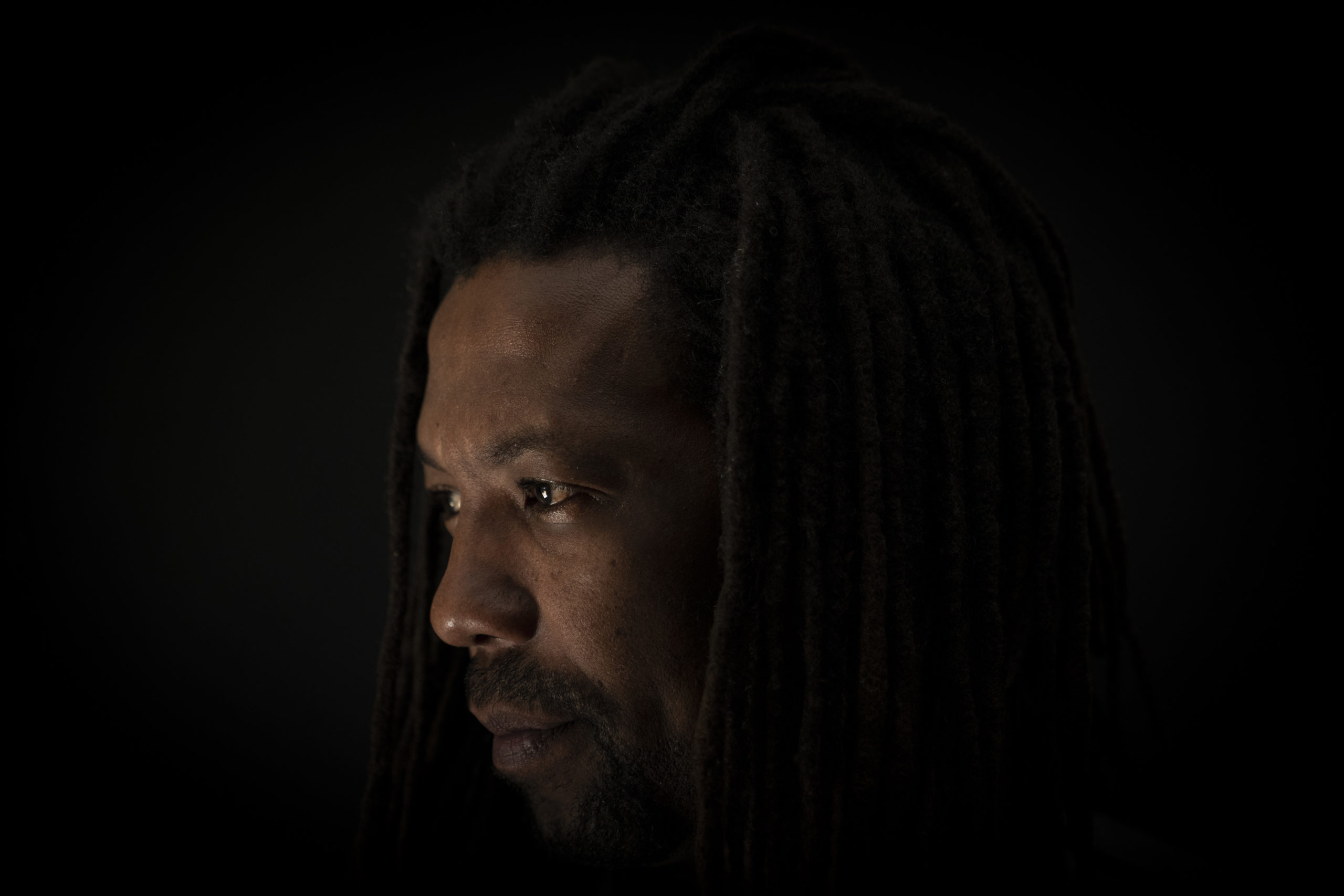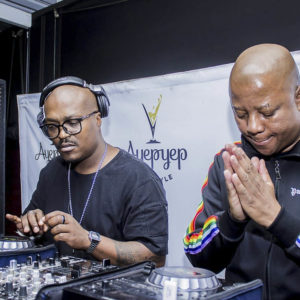The sputnik moments that launched Thabiso Tsotetsi
The pioneering producer and sound engineer played a large part in altering the course of South African hip-hop with his contributions to both kwaito and motswako.
Author:
26 April 2022

When he entered the studio to work on rapper Tuks Senganga’s critically acclaimed 2005 debut album, Mafoko a Me, Thabiso Tsotetsi was virtually unknown. Apart from critics and fans who intensely followed South African hip-hop and the evolution of its subgenres, little attention had been paid to the producer Thasman, popularly known as Thaso, the person responsible for bringing some of South African hip-hop’s most promising musical projects to life.
Tsotetsi spent most of his time working on producing projects under his Impact Sounds label. They would come to disrupt African popular music in ways we are still reckoning with and don’t always appreciate.
One of the few people who greatly appreciated Tsotetsi’s ability to induce a unique sound in a genre saturated with Western influences was the late motswako rapper Jabulani Tsambo (Hip Hop Pantsula, later shortened to HHP and also known as Jabba). Tsambo recognised the radicalism of Tsotetsi’s work as one of its biggest benefactors. “I look at my catalogue and I think some of my best work was with Jabba. We made magic,” says Thaso.
But if Tsotetsi created magic with Tsambo, he would lack the words to describe what came next. Tumelo Kepadisa was a struggling student and inexperienced rapper who often thought about quitting and returning home to North West in the early 2000s. But everything changed with the release of Mafoko A Me, under the moniker Tuks Senganga.

The album was far ahead of its time, and it settled the debate about the possibility of a unique South African hip-hop sound. Tsambo and the motswako group Morafe had been making that case long before the release of Mafoko A Me, but Tuks’ debut elevated the argument to a mainstream crossover discourse.
For Tsotetsi, the success of the album meant an overdue recognition of his contributions to moulding motswako into a coherent sound. Though it didn’t carry any new insights about his brilliance, it did illuminate his importance to the subgenre. And despite it being one of his most acclaimed projects, he is wary of people appreciating his work by pinning it on a single album.
“Mafoko A Me is one the best albums I’ve ever produced. I couldn’t fault it even if I tried. But my work doesn’t begin or end with it,” he says.
Motswako comes into its own
More than dragging Tsotetsi out of pop obscurity, the album was decisive in asserting motswako’s sonic integrity. As it became a coherent sound and upended every hip-hop argument for pop triumph, its artists, particularly Tsambo, who was sometimes booed off stage (his later struggles with mental health can be traced back to this moment), were often accused of trying to appropriate kwaito.
You could not listen to Mafoko a Me and come away thinking motswako was in any way doing that. But the tension it evoked was understandable; it was hip-hop’s first respectable challenge to kwaito’s mainstream dominance.
Motswako ceased being an experimental hip-hop sound with the release of Morafe’s 1998 debut, Maru A Pula, which Tsotetsi produced. It brought coherence to the subgenre that, until his arrival, had mostly been experimental and in some ways made it economically viable. But Tsambo’s YBA 2 NW – an album to which Tsotetsi contributed – was more affirming of the possibility of motswako as a vehicle through which to critique South Africa’s new social order.

“I didn’t produce the whole YBA 2 NW album, but I think even prior to that Jabba had found his voice. Think of how massive a song like Hebanna was,” he says.
Before setting up motswako’s sonic foundation, Tsotetsi had been busy doing something that many had begun to think was impossible: expanding the possibilities of kwaito.
“I’ve always been a motswakolista, but kwaito was my first influence. It was the biggest thing when we were growing up and its influence on my work was inevitable,” Tsotetsi says.
A kwaito influencer
A part of what kwaito pioneers attempted to do was to broaden South Africa’s pop scene, which until its arrival had mostly been defined by – and held to – Western standards that often made it inaccessible and elitist. But as they chronicled township life and unmasked the shortcomings of the country’s newfound freedom, kwaito stars began to sound like they had run out of narratives to explore. They became more comfortable in recycling narratives for mainstream consumption than advancing an alternative discourse about township life.
That was until Tsotetsi and Zola entered the studio to craft his 2004 sophomore album, Bhambhata. Zola’s debut, Umdlembwe, had redefined the sound of kwaito, but it still lacked the nuance that the stories of township youth demanded. Tsotetsi’s production allowed Zola to broaden his narratives and craft a more nuanced kwaito album with Bhambhata, which allowed him to show that there was more to kwaito than the township violence that defined it.
“I understand that a lot of people began to encounter my work after Mafoko A Me, but Zola’s Bhambhata was just as equally critical in my journey as a producer. There’s also my work with Unathi,” says Tsotetsi.
Related article:
He arrived on the scene at a time when the tension between kwaito and hip-hop was still raging. At the heart of it was the question of which youth movement was more genuine and authentic in its representation of South African youths’ post-apartheid aspirations.
“There’s always tensions between genres, but the tension between kwaito and hip-hop was more literary. Hip-hop accused kwaito of not writing enough. And in turn kwaito charged with being boring,” Tsotetsi explains.
Kwaito exposed the limitations of the post-apartheid state in transforming the lives of township dwellers, who were predominantly Black and the product of migrant labour. But it also undressed townships as bustling pots of creativity in spite of the state’s failure to transform them into viable communities of choice.
A new conversation
Kwaito’s hopeful phrasing of the township went against what local hip-hop pioneers saw as a system meant to keep Black people in perpetual servitude. To uncritically celebrate the township was to give that system a pass. They felt that many of the township narratives that populated kwaito were often uncritical and therefore perpetuated and affirmed stereotypes about Black people. Motswako pioneers expressed a more balanced view.
“Motswako was above whatever issues kwaito and hip-hop had. It was something completely unexpected and unheard of. It took a while for anyone to grasp its implications,” says Tsotetsi.
His work with both kwaito and hip-hop exposed the divisions between the two movements as a farce. Both these genres were similar in ways that their respective pioneers wouldn’t have cared to admit.

Tsotetsi’s story, however, is more than just about music. It is also about the economic possibilities of the cultural genius of South Africa’s Black working-class youth. Like many of the artists he would later guide, Tsotetsi arrived in Johannesburg for its opportunities, setting up his Impact Sounds label. It became a catalyst for independent hip-hop stables such as Tsambo’s Lekoko Entertainment, and while Tsotetsi says it was difficult, his passion for music kept him going.
Despite the fact that he’s one of the most critical characters of the South African post-aparthied cultural story, Tsotetsi’s contributions are poorly studied and yet they are an important way to interrogate the cultural contradictions and complexities of both kwaito and hip-hop. For example, it’s only through genuinely examining Tsotetsi’s legacy that we can begin to approach the question of kwaito’s mainstream demise.
Record label owner Lance Stehr and Ghetto Ruff would love to take credit for being the stable that brought both kwaito and motswako to life, but it’s impossible to see how these genres would have existed in the absence of Tsotetsi and Impact Sounds.

